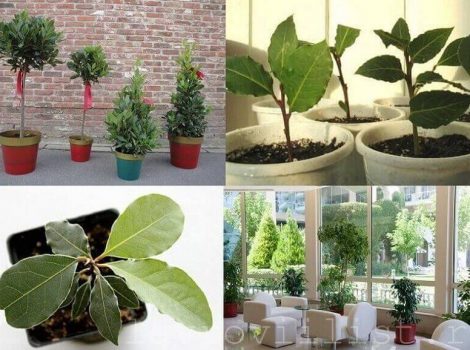Content
- 1 The olive, or olive tree, is a member of the Olive family.
- 2 Silver olive
- 3 Olive tree indoors
- 4 Ornamental olive tree
- 5 Olive tree at home
- 6 Olive tree: care
- 7 Reproduction
- 8 Preparing the seeds
- 9 Propagation by cuttings
- 10 Lighting
- 11 Blooming olive: care
- 12 Pruning
- 13 Top dressing
- 14 The nuances of home care
- 15 Plant on the site
- 16 Growing technology
- 17 Major problems and pests
- 18 Influence of culture
- 19 Breeding olives
- 20 Why does the plant not bloom
- 21 How to choose an olive
The olive, or olive tree, is a member of the Olive family.
In the Mediterranean region, on the southern coast of Crimea, in the south of Russia and in other areas with a mild climate, this evergreen plant is grown outdoors.
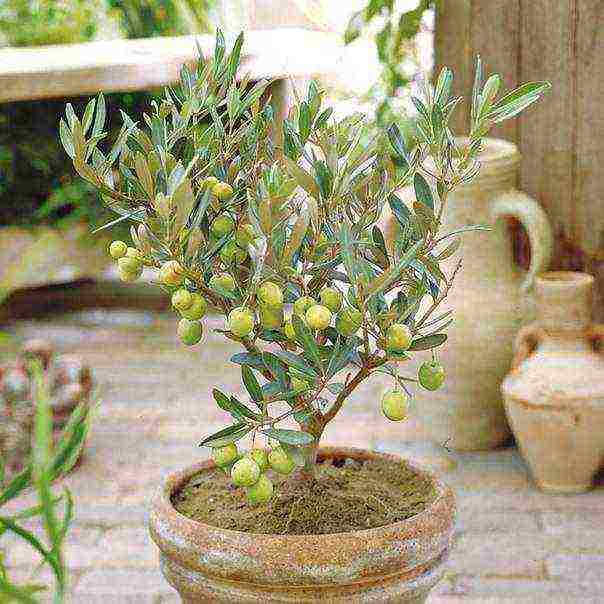
In more severe climatic conditions, it can be grown in a conservatory or other spacious, bright room, including at home. If you choose trees of table varieties, with proper care, the plant will regularly bear fruit.
The best and easiest way is to purchase an olive tree sapling. If this is not possible, there are other options for obtaining this plant - cuttings and sowing seeds. If the olive. Is needed solely for decorative purposes, you can propagate it by seed.
Before sowing, the seeds must be kept in a 10% alkali solution for about 18 hours. This procedure is carried out in order to soften the tough shell, through which the sprouts may not break through. After that, the seeds should be washed, dried and the sharp tip of each of them cut with a secateurs.
You will be interested in: Hydrangea at home
Now you can start sowing. The soil for sowing must be air and water permeable. A mixture of equal parts of leafy earth and coarse-grained sand with the addition of 0.5 part of peat is suitable. You can add crushed charcoal and broken brick chips to it. The embedment depth is about 2 - 3 cm.
It takes patience to grow an olive tree from seed. Shoots will appear only after 2 - 3 months, and all this time it is necessary to take care of the sowing, maintaining a moderate moisture content of the substrate. Neither drying out nor waterlogging of the soil should be allowed. Olive seeds have a germination rate of less than 50%. Often they do not germinate at all or give non-viable plants that soon die.
Another disadvantage of seed propagation is the late entry into the fruiting phase. For the first time, a plant obtained from a stone can bloom and bear fruit in tens of years after sowing. Olive is a long-liver, and for her it is a short time, but this method is certainly not suitable for a person to obtain olives. Therefore, trees grown from seeds are grafted using a varietal plant as a scion.
Cutting allows you to get an olive tree that completely retains all the characteristics of the parent specimen and will bear fruit in about 2 to 4 years after planting. For this purpose, you need to take fragments of two- or three-year branches with a diameter of about 3 cm.Sections should be covered with garden varnish and treated with a growth stimulator, after which the planting material is buried in the sand to a depth of 10 cm.It is better to plant the cuttings at an angle. It is advisable to cover the box with glass or film.Within a month, dormant buds wake up, and rooting and shoots begin. During this period, care will consist in spraying (not watering!) And airing the plants.
The optimum temperature for rooting is 20 - 25 ° C. The lighting should be good, but direct sun should be avoided at this stage. After 2 - 4 months, when the root system of young olives is formed, they can be transplanted.
When planted in autumn, the plants grow in time for spring. Gradually, they need to be accustomed to the bright sun, which in its natural environment is an essential condition for the development of an olive. With the onset of summer, the trees can be taken out on the terrace or in the garden. Fresh air and sunlight will benefit them. Like most of the Mediterranean flora, the olive tree is highly drought tolerant. Therefore, watering should be moderate, and waterlogging should be avoided. There must be a good drainage layer in the pot so that moisture does not stagnate at the roots. Otherwise, the precious tree may die.
Another important point is the acidity of the soil. Unlike tropical species, the olive prefers alkaline substrates. It does not tolerate acidic soils, so peat should not be included in the soil mixture for adult specimens. At home, the crown of the olive tree must be shaped by removing weak branches and shortening too long ones. The plant tolerates shearing well and gives good growth during the growing season, so you can safely give it any desired shape. But when growing for the sake of fruit, it should be borne in mind that the main crop is formed on last year's growth. In this case, radical pruning is not worth it.
Despite the laborious and not always effective breeding process, the olive is a rather unpretentious plant. It is indifferent to air humidity, tolerates drought well, and its tough foliage is not of interest to pests. Therefore, growing an olive tree is not a big deal. And if you provide him with full lighting and additional food, after a couple of years you can get fragrant flowers and the most useful fruits. At home, an adult olive produces up to 2 kilograms of berries.
Share this information with your friends on social networks!
READ ALSO
Silver olive
Once a furious dispute broke out between the patroness of the world Athena and the god Poseidon. Angered by the warlike Poseidon, Athena thrust her spear into the ground with force. The first olive tree on earth (Olea) immediately grew out of the earth. Since then, as the legend tells, the olive tree has become a symbol of peace and creative work.
Since ancient times, the branches of the olive have served as a kind of peace sign. To this day, the symbolic image of an olive tree, together with Pablo Picasso's Dove of Peace, serves as the emblem of representative forums.
Olive oil was used for hygienic purposes. They used it to lubricate (anoint) the skin, softening and cleansing it.
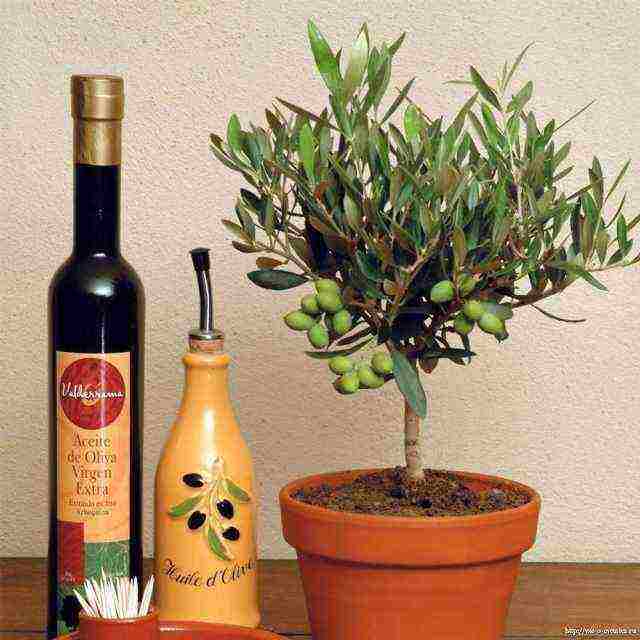
Olive tree indoors
What kind of tree is this - a noble and venerable olive tree and will it take root, accustomed to free air, in our rooms? Under natural conditions, the olive (Olea europaea) grows both in semi-deserts, and on stony mountain slopes, and on poor sandy and saline soils - sometimes where no other tree survives. In areas with a dry subtropical climate, it is truly becoming a pioneer in land development.
From a distance, the olive looks silvery, since its narrow dark green leaves are covered with a bluish bloom underneath. It can even be mistaken for some kind of willow - the large branches of the olive tree are also characteristicly curved and "weeping" bent over the ground. However, the leaves of the southern exotic have nothing to do with willow - they are dense and tough, because the Mediterranean sun beats mercilessly, the plant has to save moisture - to protect delicate internal tissues from the heat with powerful covers.
The drought resistance of olives is striking. Here the date palm can be compared to it. Both "love" when their "head" is warm, and their "legs" are cool: in search of life-giving moisture, they deeply direct their roots, which reach the level of groundwater, which sometimes lies at a depth of 5-7 meters from the surface of the earth.
Olive tree care
This means that a lover of exotic plants who wished to “domesticate” the olive tree should choose a well-lit place for it, and water it abundantly during the period of active growth (March - August). In autumn, watering is reduced, in winter, when the development of the olive seems to freeze, the soil in the pots must be moistened twice a week and never more often.
Although the olive tree is unassuming, it grows and develops much better on nutritious and fertile lands.
Landing
Sowing seeds is carried out in nutritious, but loose and, as they say, light soil (the mixture is made up of leafy and sod land, sand, peat in equal volumes). Large oblong olive seeds are planted in bowls or small (5-7 cm in diameter) pots to a depth of 1 cm; germinate them at an air temperature of + 20 + 24 degrees C, avoiding waterlogging and overdrying of the soil.
Reproduction
The olive tree can also be propagated by semi-lignified cuttings from March to April or from August to September). To do this, the shoots are cut into 10-12-centimeter segments, which are planted in well-washed river sand in shallow boxes or bowls and kept in a micro-greenhouse glazed or covered with plastic wrap, where high air humidity is achieved. The first roots appear in 3-4 weeks.
Olive cuttings are usually poorly rooted. Therefore, they are immersed with their lower ends in a solution of heteroauxin for 16-20 hours. It is prepared as follows: 200 mg of heteroauxin is dissolved in 10 ml of alcohol, then the container is topped up to a volume of 1 liter with distilled or settled tap water. Reproduction of cultivated varieties is also possible by grafting.
By the end of the first year of life, young seedlings should be transplanted into larger - 9 cm - pots, into a soil mixture consisting of three parts of sod land, one part of sand and one part of humus soil. Up to three to four years of age, transplants are carried out annually, older specimens are transplanted after a couple of years.
The olive grows rather slowly and blooms for the first time only at 5-8 years of age. In the axils of its narrow leathery leaves, brushes of small fragrant greenish-yellow flowers appear. Their aroma is somewhat reminiscent of the fragrance of blossoming lilacs. After all, these plants are close relatives. And in the fall, our tree ripens yellowish or bluish-black fruits - olives. Fresh, they are bitter, slightly edible, so they are pickled, salted, and very valuable olive (Provencal) oil is obtained from them.
Top dressing
During the period of active growth and development of the olive (February - October), it is necessary to systematically feed (once every two weeks) with solutions of mineral and infusions of organic fertilizers. In summer, for better setting and development of fruits, it is useful to jointly introduce double superphosphate (in the form of an aqueous solution at a concentration of 5 g per liter) and mullein (its two-week infusion, diluted 15-20 times before use).
From November to February, the plants kept in the rooms sharply slow down their metabolic processes, and they pass into a state of relative dormancy. In winter, the olive tree should be kept in light and cool (t = +10 + 14 degrees C) rooms, stop fertilizing.
Lighting
Insufficient light, excessive watering and too high air temperature in winter - this is what can prevent you from "taming" the olive tree in your home. If these obstacles are surmountable, then you need to be patient.Indeed, of the majority of plants, which we have already talked about, the olive is the most "leisurely": it grows slowly and does not bloom soon. But you can grow it all your life: the age of this small tree is surprisingly long - it lasts, according to some botanists, 3-4 thousand years.
How to grow an olive tree at home Photo and Video
Video clip on this topic. For all flower lovers))
Do not miss:
How to grow Guayava or psidium in the house. Flowers on the balcony. Bougainvillea.
Share this wonderful material on social networks using the buttons below. Already 1464 readers have shared.
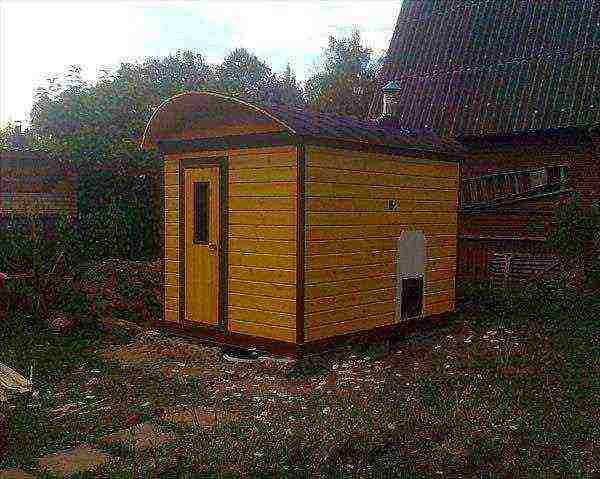
The olive tree belongs to the Olive family. In the Mediterranean, in the south of Crimea, in the southern regions of Russia and in other areas with a mild climate, this plant is grown in the open field. In more severe conditions, you can grow it in a winter garden or in a spacious, bright room, including an apartment. Table trees will bear fruit regularly with proper care.
The olive tree belongs to the centenarians. It has been growing for over 500 years. Olive trees grow in the Garden of Gethsemane (Jerusalem), the age of which, according to scientists, reaches 2000 years. Greece is considered the birthplace of the olive. According to an ancient legend, the goddess Athena sent an olive branch to this fertile land, from which the first tree grew.
Olives are a real treasure for the human body. They contain over 100 nutrients. It seems that nature itself has taken care of the health, freshness and beauty of man, giving him these priceless fruits.
Olives are the simplest and most effective prevention of diseases of the heart, blood vessels, gastrointestinal tract and breast cancer. To achieve the desired effect, it is enough to eat only eight olives a day or season salads with olive oil.
Oliva is the personification of deep internal cultural ties. At least that's what Thomas Friedman thinks. He expressed his thoughts on globalization and cultural identity in his sensational book Lexus and the Olive Tree, published in 1999.
Ornamental olive tree
Usually homemade olive is grown not for the sake of fruit, but because of its decorative, very attractive appearance. Today there are many varieties of this wonderful crop that have characteristic features. For growing at home, varieties that reach no more than 2 meters in height are suitable, which are suitable for growing in a container.
The olive tree at home is a miniature, evergreen plant with a spherical and compact crown. Young plants have a light gray bark, older plants have a darker one. Leaves are dense, narrow, lanceolate, dark green. They stay on the branches for a long time, do not fall off even in winter. They are updated every 2 years.
The flowers are white, small, bisexual, with a goblet calyx. The fruits are elongated-oval single-seeded drupes, about three centimeters long, which have a pointed or blunt end and a fleshy pericarp. The color of the fruit can be green or dark purple, depending on the variety. Its average weight is 15 g.
Olive tree at home
Many are worried about the question of whether this plant will take root in our apartments? Under natural conditions, the olive tree grows in semi-deserts, and on rocky mountain slopes, and on saline and poor soils. Sometimes where no other plant can survive.
The olive tree looks silvery from a distance, because its dark green narrow leaves are covered with a bluish bloom on the underside. It is even sometimes mistaken for some kind of willow.
The drought resistance of the olive is striking. In this, the date palm can be compared with it, probably. Both of these trees love when their crown is warm and the roots are cool.In search of moisture, they direct their roots very deeply, reaching groundwater, which is sometimes at a depth of 5-7 meters.
Olive tree: care
At home, this unpretentious plant does not require complex care. He needs a well-lit "place of residence", abundant watering during the period of active growth (March-August). In autumn, olive watering is reduced, and in winter, when the plant seems to freeze, the soil in the pots is moistened no more than twice a week.
Reproduction
The homemade olive tree, which is easy to care for, even for a novice grower, is propagated by seeds, grafts and cuttings. To grow a tree solely for decorative purposes, the plant is propagated by seeds.
Preparing the seeds
This method is quite long, but it allows you to see the entire development cycle of the tree and guarantees its high survival rate. Before planting, they are soaked for 12 hours in a solution of caustic soda. Then they are rinsed with water and planted in a pot with a diameter of no more than nine centimeters to a depth of two centimeters. The soil should be moist and nutritious. In addition, you should pay attention to the fact that the earth is loose, light. Such a mixture consists of leaf and sod land, sand, peat in equal volumes. Large, oblong-shaped olive seeds are planted in small (5 cm in diameter) pots no deeper than 1 centimeter.
You will see the first shoots after 2 months. At this time, you should carefully monitor the soil moisture. It is recommended to water the sowing as the clod of earth dries up and try not to allow it to become waterlogged or dry out. Seed germination is usually 40-50%. Often, the seeds do not germinate or give non-viable, weak shoots, which die after a short time. If we grow an olive tree from seed, then the first fruits should not be expected until after ten years. If you want to speed up the terms of fruiting or flowering, the grown seedlings must be grafted onto varietal plants.
Surprisingly, an olive tree at home can even be grown from a stone. True, in order to obtain a good result, it is necessary to carry out a long preparation process.
Propagation by cuttings
In this case, the olive tree retains all its maternal characteristics. The first fruits appear in the third, in rare cases in the second year. Two or three summer branches should be taken. Their slices are carefully treated with a growth stimulant, after which the cutting is planted in the sand ten centimeters deep, the seedlings are covered with glass on top (for this purpose, polyethylene can also be used).
For rooting, the optimum temperature is 25-27 ° C. It usually occurs within a month, after which shoots begin to appear. After 3-4 months, the root system is fully formed, and the seedling can be transplanted to its permanent place in a large pot.
Lighting
The olive tree, which is easy to care for at home, is very fond of good lighting, so southern window sills are suitable for young plants. Mature trees can be placed in a room in any well-lit place.
In the warm season, it is useful to take the plant out into the air - in the garden or on the balcony. An abundance of light is especially needed during the period of plant growth and bud formation. If it is not enough, the olive will slow down its growth. In winter, the tree needs additional lighting to prevent leaves from falling off.
The air should be warmed up to 18-22 ° C - this is the most comfortable for this culture. During the rest period (winter), the temperature should not exceed 13 ° C. Such conditions will facilitate the establishment of flower buds. Watering during this period is reduced; top dressing is not recommended to be introduced into the soil.
Blooming olive: care
During the flowering period, the plant needs more careful care. At this time, it is very important to monitor the condition of the soil.Watering is carried out as needed (when the top layer of the earth dries up). If there is not enough moisture, the leaves of the plant grow dull, curl up, and then fall off. This can even lead to the death of the tree.
Slightly yellowish to completely white flowers with a delicate and refined aroma bloom in mid-June. At home, the tree is decorated with delicate flowers for several months. Wind and insects pollinate the plant, but daily shaking of the branches is necessary for a home olive. With self-pollination, fruits can be set of different sizes, and cross-pollination significantly improves their quality and productivity.
Despite the fact that the olive tolerates dry air well, we recommend sprinkling its crown in extreme heat. Until the age of four, the plant needs an annual transplant. This is usually done in early spring, and it is not necessary to change the entire contents of the pot, it is enough to replace only the top layer of the soil with a more fertile and fresh one.
Pruning
Regular pruning will help you shape the olive's crown into a neat, spherical shape. During this procedure, remove dry and weak branches, shorten long shoots, create the desired shape. If you decide to grow an olive tree for fruit, remember that the bulk of the crop comes from last year's growth. Therefore, pruning must be done very carefully so that you can enjoy the harvest next year.
Despite the somewhat laborious cultivation process, the olive tree is unpretentious, not prone to disease. With regular and proper care, two years after planting, you can admire the blooming olive and get a good harvest (up to 2 kg of fruits per year).
Top dressing
During the active growth and development of the olive (February-October), top dressing should be carried out regularly (once every fifteen days) with solutions and infusions of organic and mineral fertilizers. For better setting and development of fruits in the summer, the introduction of double superphosphate is useful. For this, an aqueous solution of a substance is used at the rate of five grams per one liter of water. In addition, it can be mullein - a two-week infusion, diluted 15-20 times before use.
From November to February, the olive tree, which is kept in the room, sharply slows down all metabolic processes, and it goes into a state of dormancy. In winter, feeding is not carried out.
If you set out to grow a homemade olive tree, you should remember that insufficient light, excessive watering and very high air temperatures in winter will not allow you to "tame" such a tree in your home. If you can cope with these obstacles, then you need to be patient, because compared to most plants that experienced growers know about, the olive develops very slowly, and it does not bloom too quickly. But indoor plant lovers are attracted by the fact that it can be grown all their lives - this small tree lives, according to scientists, at least three thousand years.
The olive tree, or olive tree, belongs to the olive family. In its natural environment, it occurs in the form of shrubs and trees. The European olive is especially popular. There are about sixty types of culture. The plant is native to Africa, southern Europe, Australia and South Asia. Trees are uneven. They are distinguished by long branches. The life cycle of the olive tree is about 300 years. The culture is referred to as centenarians. The olive tree can be kept at home for up to 10 years. Then you need to land it in open ground. The olive produces valuable fruits. The mass of one is no more than five grams. The leaves of the olive tree have a gray-green hue. The vegetative organs of the plant contain a high concentration of starch. Thanks to this, the culture copes well with prolonged drought.Olive wood is colored gray.
The nuances of home care
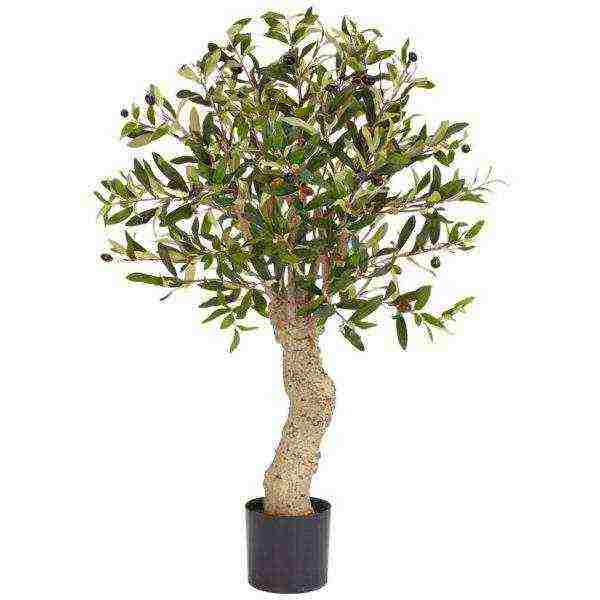
To grow an olive tree, it is necessary to create warm microclimatic conditions.
Lighting
The olive tree prefers warm conditions. In nature, the plant can be found on brightly lit shores. Does not tolerate shaded areas.
Temperature regime
The olive tree can withstand temperatures as low as -15 degrees. In severe prolonged frosts, the plant will die.
During the period of active vegetative development, it is recommended to maintain the temperature at a level of + 18 to + 20 degrees. During the flowering stage, return frosts can affect yields. The intense heat combined with dry air also damages the tree.
Watering
The culture responds well to uniform soil moisture. In the spring-summer season, it is advisable to regularly water the substrate. Prolonged exposure to dry soil leads to leaf fall.
In winter, the amount of watering should be reduced. Moisten enough as the substrate dries. It is advisable to use warm, soft water for the olive tree.
Environment humidity
The plant does not require special conditions. In hot seasons, it is recommended to increase the water content in the air. To do this, you will need to spray the plant with water at room temperature several times a day.
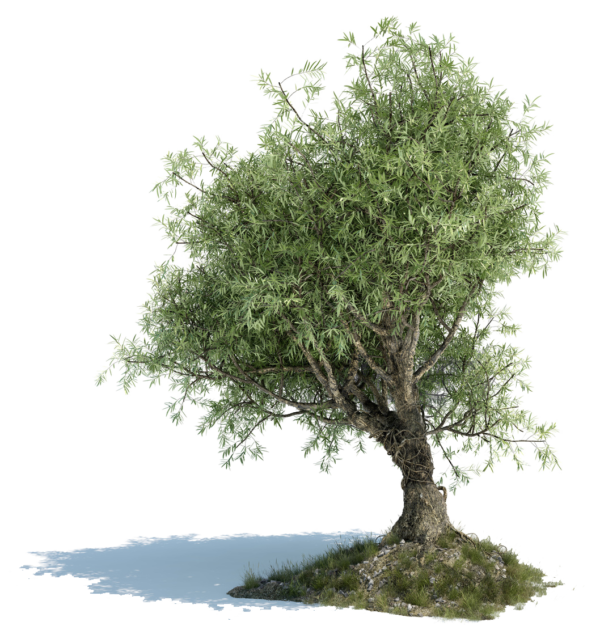
In the dry season, it is advisable to spray warm water on the tree.
Transplant features
The olive tree can survive a change in soil and substrate. It is not advisable to transplant to adult representatives of olive trees. The root system of the tree is often damaged.
For transplant, you need to prepare a suitable place. Growing on rotten, dry soil often results in wilting. In its natural environment, the plant can be found in the rock. Therefore, you can add charcoal and pieces of brick to the soil during planting.
Pruning
The olive tree needs to be sanitized in a timely manner. The plant is often damaged by pests. Outdoors in early spring, remove the affected areas.
Indoor culture can be compact. For this, weakened shoots and long branches should be removed. The plant tolerates cutting very well. During one growing season, the culture will give excellent growth.
If the plant is cultivated for harvest, the particularity of the olive tree must be taken into account. The fruits are formed exclusively on the shoots of the last year. Therefore, cardinal pruning can destroy a large number of olives.
Plant on the site
Outdoors, the tree takes root and bears fruit in the southern part of Crimea and the Mediterranean region. In harsher conditions, the crop can be grown in a spacious room, conservatory, greenhouse or room.
Frost at -5 degrees will damage the weakened branches of the olive tree. At -15 degrees, the whole plant will die. Even with a slight decrease in temperature, there was a sharp deterioration in the taste of fruits and olive oil.
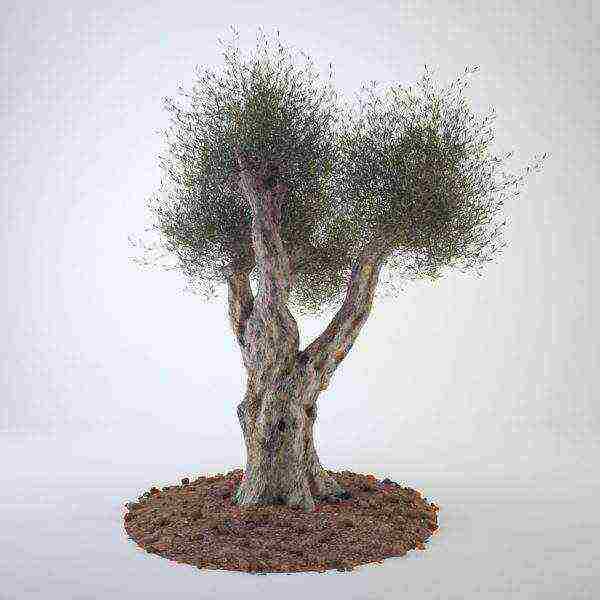
For abundant fruiting, choose the right tree varieties.
For harvesting, you need to purchase garden varieties. The bred subspecies guarantee regular fruiting.
The nuances of cultivation at home can be found in the video:
Growing technology
Soil mixture
Waterlogged substrate and poor soil carrying capacity are the main causes of wilting of the olive tree. Areas where water accumulates should be avoided. When planting, be sure to add a thick layer of drainage.
You can protect the plant from excessive rainfall by planting it on a gentle slope. It is advisable not to use a fertile substrate. Excessive amounts of nutrients cause intensive growth of the tree. As a result, the percentage of yield decreases.
The ideal soil for growing a tree must meet several requirements:
- good drainage;
- looseness;
- fineness.
If possible, fill the planting hole with a mixture of sandy and loamy soil.
How to fertilize
Nutrient deficiencies can be replenished with nitrogen. The procedure should be carried out once a year. One hundred square meters will need no more than 1.2 kg. Can be planted next to natural nitrogen-producing olives (legumes). It is also recommended to periodically add compost to the soil.

The olive tree should be fed with nitrogen and compost.
Container growing
To grow olives indoors, first of all, you need to prepare the right variety. It is advisable to purchase a dwarf culture. The container should initially be chosen large enough. The size of the pot must be at least 60 cm deep and wide.
It is imperative to make several additional large holes in the bottom of the container. The main enemy of olives is the constant moisture of the soil. Therefore, to grow a house tree, you should prepare a loamy or sandy soil. Before the next watering, the soil should dry out at least three centimeters deep.
Container olive is more demanding. For the full development of an indoor tree, it is necessary to regularly carry out gentle pruning. It is not recommended to allow thickening of the main branches. It is enough to leave no more than four main branches on the tree.
Major problems and pests
The evergreen tree is especially vulnerable to pest and disease attack. The greatest danger to the plant is represented by black bugs. Excessive use of chemical protective preparations does not have the best effect on the yield of olives. Therefore, it is desirable to maintain the tree's immunity with organic and mineral means.
The appearance of tiny black worms on the surface of the bark indicates that the tree has been damaged by pests. African insects are capable of laying up to two thousand eggs. Often gardeners make the mistake of assuming that parasites live exclusively on a diseased plant. In fact, pests can attack a perfectly healthy evergreen tree. Worms can be eliminated with systemic insecticides.
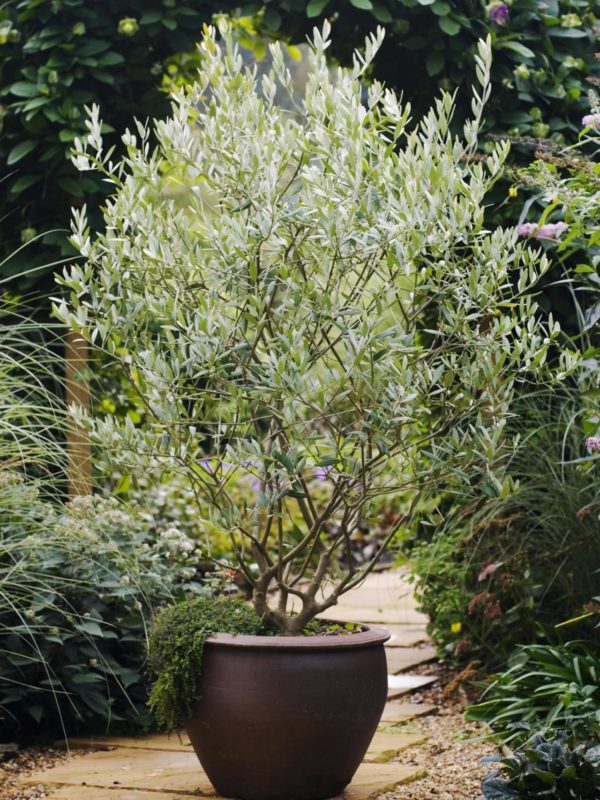
The tree has a low threshold of resistance to pest and disease.
The crop is often damaged by whitefly and olive moth. In the open air, eaten buds and leaves indicate a settlement of caterpillars.
Sudden wilting of branches and leaves indicates infection with verticillary wilting. Fungal disease does not respond to treatment. If you do not rid the evergreen tree in a timely manner from the affected areas, the plant will die. In case of infection in an open area, a place for further planting of olives should be avoided.
Influence of culture
With proper care, cultivating olives at home is not a problem. It is enough to provide the culture with adequate lighting and timely nutrition. Within a few years, fragrant inflorescences and healthy olives will appear on the tree. A container plant is capable of producing about two kilograms of fruit.
Olive oil contains lecithin. Element intolerance causes an allergic reaction.
Allergies can also be cross-linked. People who are prone to reactions to lilacs, olives and jasmine of the genus oilseed react especially to olive oil.
Often the occurrence of a reaction is associated with a hereditary predisposition. It is advisable to use refined oil to reduce possible manifestations.
Breeding olives
An evergreen tree can be propagated by seed and cuttings. The buds must be treated with an alkali solution before sowing. The softened casing guarantees the best germination. For planting, a permeable substrate should be prepared. The mixture should contain leafy soil and coarse sand.You can also add crushed wood ash and broken brick to the soil.
The sowing depth should not exceed three centimeters. It is important to maintain the moisture content of the substrate at all times. Even freshly harvested seeds have less than fifty percent germination. The seed olive tree is distinguished by its late fruiting. The first inflorescences may appear only after 10 years. The tree can be used for grafting.
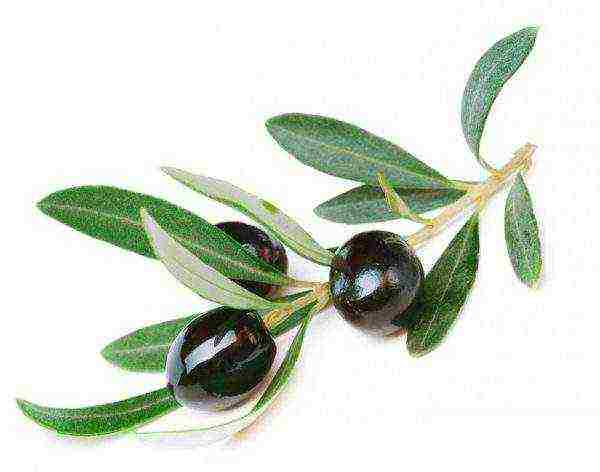
The olive tree can be propagated by seed.
Cutting will ensure the preservation of all maternal varietal traits. Fruiting will come in 2 years. The seedlings should be placed in the soil on a slope. To create a greenhouse effect, it is advisable to prepare polyethylene. The cuttings should be regularly ventilated and sprayed. After rooting, the olives can be transplanted into separate pots.
Why does the plant not bloom
An evergreen tree will begin bearing fruit a few years after planting. The term for the first formation of fruits depends on the method of cultivation. Favorable conditions favor accelerated flowering.
There are varieties that, regardless of the breeding method and care conditions, will produce fruits only ten years after planting. It is recommended to clarify all the characteristics of the planting material before purchasing.
How to choose an olive
The plant is sold in the form of seeds and grown seedlings. The average price for a package of 5 small-leaved olive seeds is 132 rubles. A container olive 30 cm high can be purchased for 1250 rubles.

